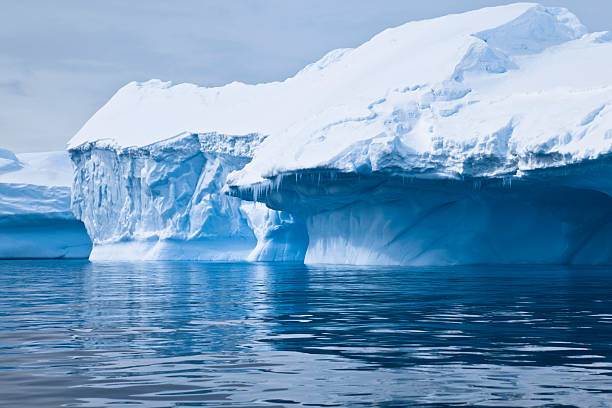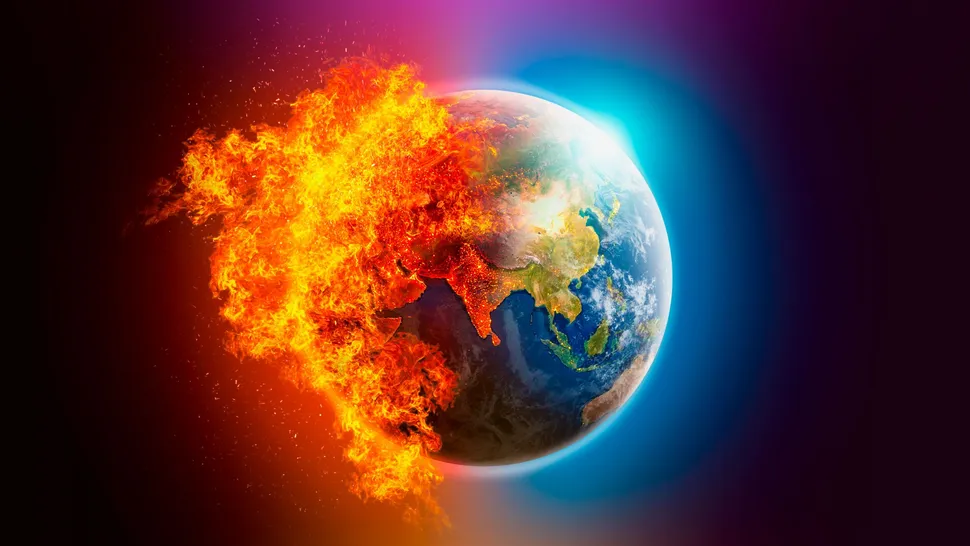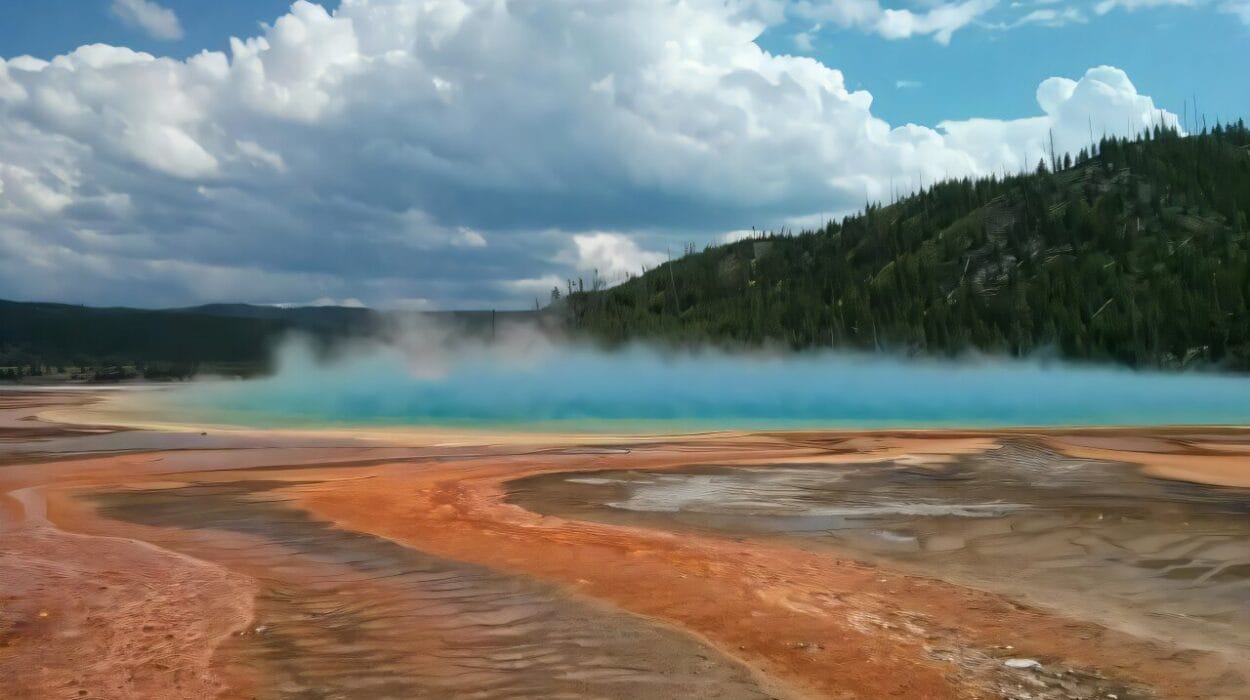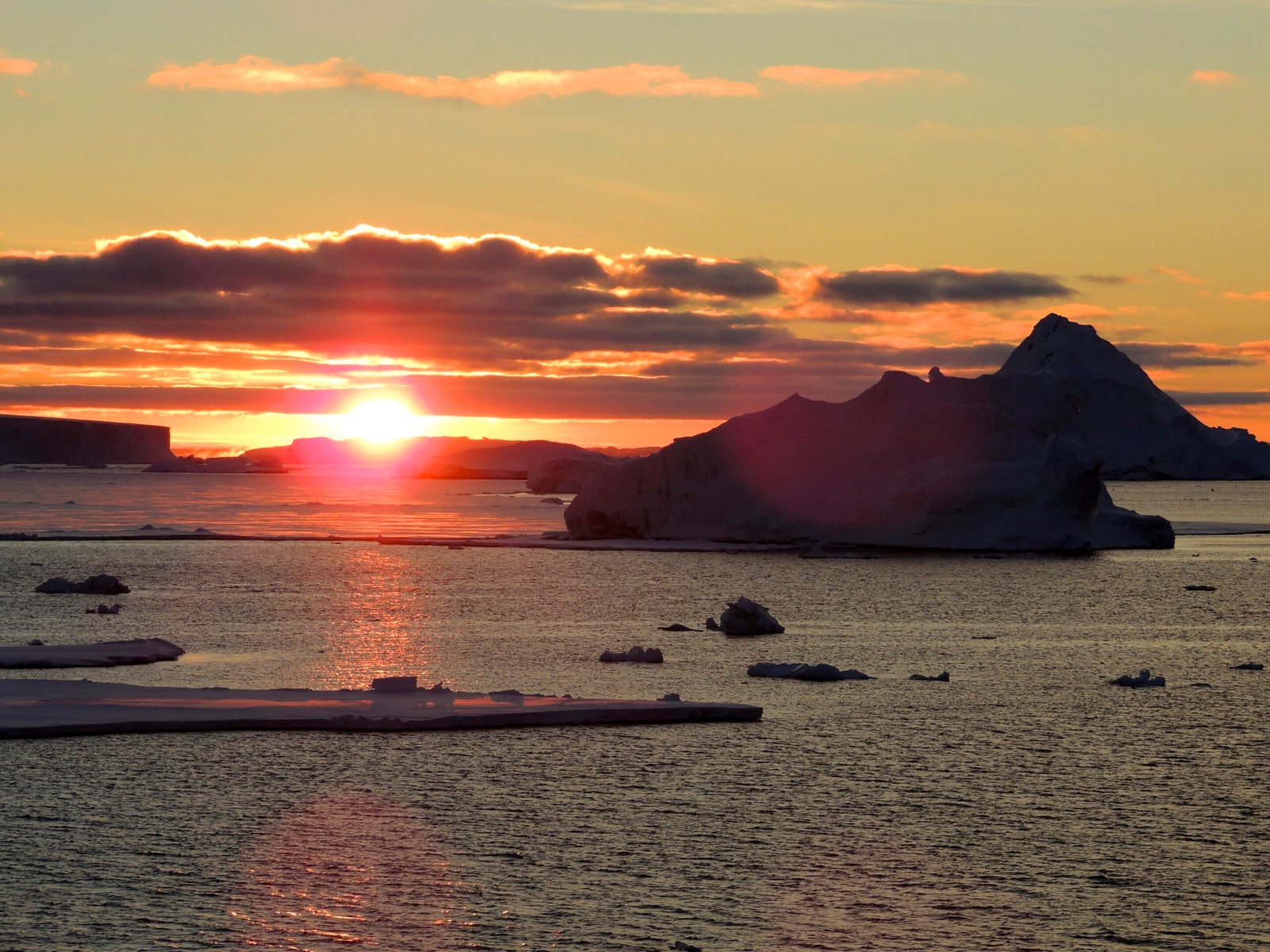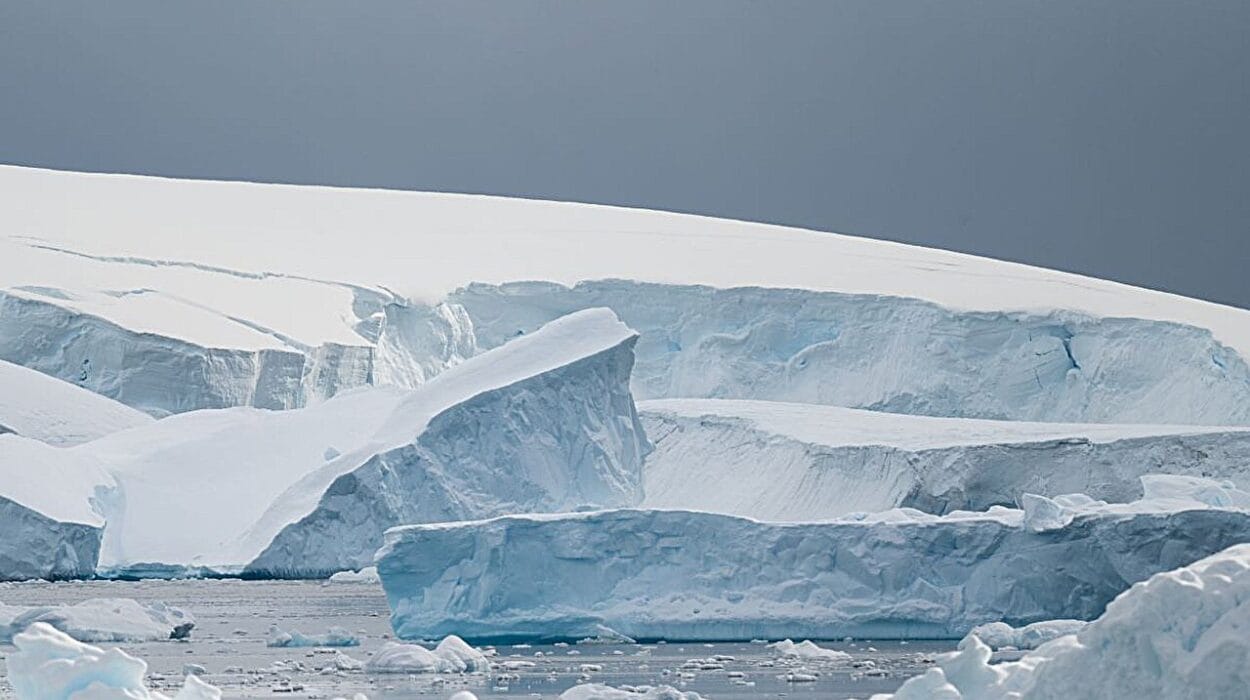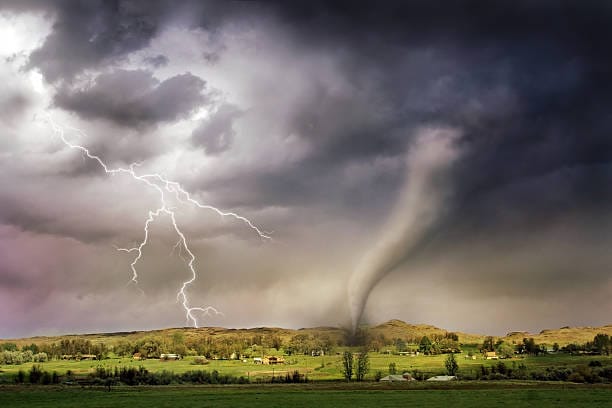In the farthest reaches of Earth—where silence reigns and the sun lingers for months or disappears for weeks—ice has been sculpting the story of our planet for millennia. These icy realms, the Arctic and Antarctic, seem remote and untouchable, but their fate is entwined with the future of every coastline, forest, farm, and city on Earth. The ice caps are melting. And they are not melting slowly.
What is happening to Earth’s polar regions is not a distant curiosity—it’s a planetary emergency. It’s a tale of heat, loss, acceleration, and irreversible thresholds. It is the story of global warming’s relentless impact on Earth’s most fragile but crucial elements: the great ice sheets and glaciers that store our planet’s memory and shape its climate.
A Delicate Balance in White
Ice caps are more than just frozen water. They are vast, dynamic systems that cover Antarctica and Greenland, flowing like slow rivers under the weight of their own mass. Together, they hold over 99% of the planet’s freshwater ice. Alongside them, mountain glaciers and sea ice form a complex network that regulates temperature, reflects sunlight, and stabilizes sea levels.
This balance, finely tuned over hundreds of thousands of years, is now unraveling. And the reason is clear—our atmosphere is warming at an unprecedented rate, driven by the relentless rise of greenhouse gases such as carbon dioxide, methane, and nitrous oxide. Since the dawn of the industrial era, global temperatures have risen by more than 1.2°C (2.2°F). And in the Arctic, where the warming is more extreme, temperatures have risen nearly four times faster than the global average.
The Arctic: A World Unraveling
Imagine standing on the icy plains of the Arctic. The air is cold, but not as cold as it used to be. Sea ice once stretched endlessly to the horizon, thick and impenetrable, reflecting sunlight back into space. Today, that reflective shield—known as the albedo effect—is thinning and vanishing.
Every summer, Arctic sea ice melts and shrinks. Every winter, it refreezes. But the freeze is weaker, and the melt is faster. Satellite records, which began in 1979, show a staggering trend: we have lost over 75% of the summer Arctic sea ice volume in just four decades. What once was multiyear ice—strong, resilient, decades old—is being replaced by thin, fragile seasonal ice that cannot withstand the warming world.
This isn’t just a northern tragedy. As the Arctic ice vanishes, dark ocean water takes its place. And dark water absorbs more heat, accelerating warming further in a vicious feedback loop. The less ice we have, the faster the planet heats. This is one of the planet’s most dangerous tipping points.
Greenland’s Ice Sheet: A Sinking Giant
On the massive island of Greenland lies one of the world’s largest bodies of ice, second only to Antarctica. Rising to three kilometers thick in places, it holds enough water to raise global sea levels by over 7 meters (23 feet) if it were to melt entirely.
And it is melting.
In the past few decades, Greenland has been losing ice at an alarming pace—over 250 billion metric tons per year. In 2019 alone, it lost a record 532 billion tons, contributing more than 1.5 millimeters to global sea level rise in a single year.
This isn’t hypothetical. It’s happening now. Scientists flying over the ice sheet with NASA’s Operation IceBridge missions have observed dramatic meltwater rivers flowing across the ice, plunging into crevasses and lubricating the base. The ice is not just melting from the top—it’s sliding into the sea from below.
Even more alarming are the signs that Greenland may have passed a critical threshold. Some climate models suggest that even if we stopped all emissions today, the ice sheet could continue to shrink, having already lost its grip on equilibrium. That’s a sobering thought: a system so massive, set in motion by human activity, and now perhaps beyond human control.
Antarctica: The Sleeping Giant Awakens
Antarctica, the vast frozen continent at the bottom of the world, has long been seen as remote and stable. Its immense ice sheet holds enough water to raise global seas by 58 meters (190 feet). For many years, scientists believed it was too cold to be seriously affected by warming anytime soon.
But the story has changed.
Though Antarctica’s interior remains frigid, its edges are breaking apart. The West Antarctic Ice Sheet, in particular, is showing signs of instability. Glaciers like Thwaites and Pine Island—sometimes called “doomsday glaciers”—are rapidly retreating. These glaciers act like buttresses, holding back larger masses of ice. If they collapse, they could trigger a chain reaction of runaway ice loss.
Warm ocean currents, driven by changing wind patterns, are now undercutting these glaciers from below, melting them from the inside out. And unlike Greenland’s ice, much of West Antarctica’s ice lies on bedrock below sea level. As it melts, seawater rushes in, lifting the ice and hastening its disintegration in what scientists call marine ice sheet instability.
In 2021, satellite imagery showed vast cracks forming in the Brunt Ice Shelf and the eventual calving of massive icebergs. These events are not just spectacular—they’re warnings of structural weaknesses forming across the continent.
Mountains and Glaciers: The Shrinking Water Towers
It’s not only the polar regions that are losing their icy armor. Glaciers in the Himalayas, Alps, Andes, and Rockies—lifelines for billions of people—are retreating at unprecedented rates. These “water towers” feed rivers that support agriculture, ecosystems, and human life.
In the Himalayas, glaciers are melting so rapidly that artificial lakes are forming at their bases. These lakes, held in place by fragile walls of ice and rock, can burst suddenly, unleashing catastrophic floods on downstream communities. These glacial lake outburst floods (GLOFs) are becoming more frequent, and more dangerous.
In the Andes, once-reliable water sources are drying up, impacting farmers and cities alike. Entire communities that relied on predictable snowmelt for drinking water and irrigation are being forced to adapt or migrate.
These are not distant threats—they’re here. And they’re hurting the most vulnerable first.
The Sea Is Rising
The melting of the ice caps is not just about vanishing landscapes. It’s about rising seas. As land-based ice melts, that water has to go somewhere, and it’s flooding our oceans. Global sea levels have risen over 20 centimeters (about 8 inches) since the start of the 20th century, with the rate of rise accelerating in recent decades.
It’s not just the water from melting glaciers and ice sheets—it’s also thermal expansion. As ocean temperatures rise, seawater expands, taking up more space. Together, these effects are reshaping our coastlines.
Already, low-lying island nations are facing existential threats. Kiribati, the Maldives, and parts of the Pacific are battling saltwater intrusion, flooding, and erosion. Cities like Jakarta, New York, Miami, and Shanghai are building sea walls and pumping systems, preparing for futures where streets could flood on a sunny day.
The Intergovernmental Panel on Climate Change (IPCC) predicts that sea levels could rise by 0.3 to 1.1 meters (1 to 3.6 feet) by the end of the century—depending on our emissions path. That’s enough to displace hundreds of millions of people and redraw the map of human civilization.
Life on Thin Ice
The ecological impact of melting ice is staggering. Polar bears, iconic symbols of Arctic wildlife, are starving as sea ice vanishes beneath their paws. They rely on ice to hunt seals, and without it, their survival is in jeopardy. Some populations are already declining, and researchers predict that two-thirds of polar bears could disappear by 2050.
In Antarctica, krill—the tiny crustaceans that form the base of the ocean food chain—are struggling as sea ice disappears. Whales, seals, penguins, and fish depend on krill. If the krill go, so does the intricate web of life in the Southern Ocean.
In mountain regions, unique ecosystems tied to glaciers and snowpack are vanishing. Species adapted to cold are moving higher, and eventually, there’s nowhere else to go.
A Climate Tipping Point
One of the most frightening aspects of ice loss is that it may be self-reinforcing. Ice reflects sunlight; water and land absorb it. As we lose ice, Earth absorbs more heat. This feedback loop could accelerate warming even faster than models currently predict.
Moreover, melting permafrost—permanently frozen ground in the Arctic—releases methane, a potent greenhouse gas. It’s a climate time bomb. The more we warm, the more permafrost thaws, and the more methane is released, fueling even more warming.
These interlocking systems create the possibility of tipping points—moments beyond which we cannot return. If we push the ice sheets past their thresholds, we may lock in centuries of rising seas and changing coastlines, no matter what we do next.
The Time to Act Is Now
The future is not set in stone. While some damage is already done, the worst outcomes can still be avoided. Every ton of carbon we don’t emit makes a difference. Every degree we avoid matters. The fate of Earth’s ice caps—and of our global climate—depends on what we choose to do now.
Global cooperation, scientific innovation, and bold policy action can still change the trajectory. Renewable energy, reforestation, emissions reductions, sustainable agriculture, and protected ecosystems are all part of the solution.
The ice caps are telling us something. In the quiet cracking of glaciers and the unseen currents under polar seas, the Earth is speaking. It is telling us that we are out of balance. It is showing us, in real time, the consequences of our actions.
And perhaps, if we listen closely, it is giving us one last chance to change course.
